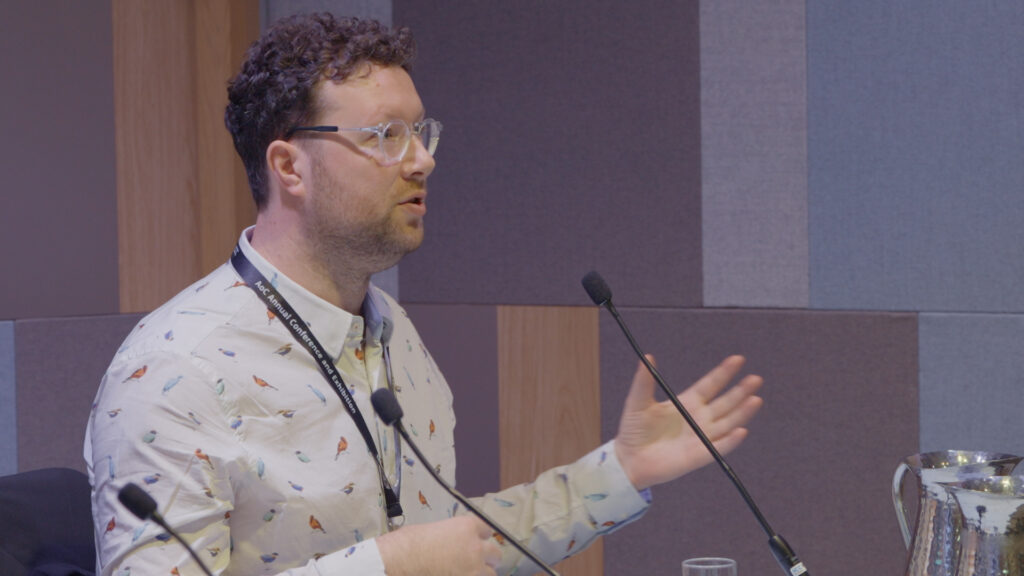Redefining how and when we learn: The power of technology

Technology is transforming learning experiences to make them more accessible and inclusive. Whether it’s bridging the gap for individuals living in rural areas, extending access to parents balancing caring responsibilities, or supporting those for whom English isn’t their first language, tech is able to create a more accessible and flexible education for everyone.
Overcoming the distance
For many learners in rural areas, distance has long been a barrier to accessing education and training opportunities. The rise of hybrid and online learning has allowed education providers to reach learners who may previously have found it challenging or impossible to participate due to their location.
A recent survey of our learners highlights their geographical spread, and demonstrates the need for accessible learning options:
17% lived more than 16 miles from their college or training provider
42% lived between 6-15 miles from their college and training provider
This data shows that a significant proportion of our learners – 59% – require private or public transportation to attend in-person classes. For many, distance comes with challenges, such as long commute times, high transportation costs, or limited access due to public transport availability. These obstacles can make wholly face-to-face learning impractical, highlighting the critical need for delivery models that are much more flexible.
A lifeline for busy parents and those with caring responsibilities
Parents and individuals with caregiving responsibilities also face barriers to accessing education due to busy, unpredictable schedules, where they may be called away to support children or family members. This makes attending frequent face-to-face classes a constant juggle.
Technology and online learning has become a powerful enabler, opening new doors for these individuals who would not have had the opportunity to attend frequent in-person classes. Instead of worrying about any missed face-to-face classes, they can access their learning on demand, making it work around them and their families.
Equity for ESOL learners
Technology also has the potential to transform what’s on offer to support the studies of non-native English speakers. Subtitles for all learning content will enable individuals to follow along more easily, helping overcome barriers to understanding like accents, unfamiliar phrases and grammar, or technical terminology. On our Virtual Learning Environments (VLEs), all learners also have access to transcripts, which provide a written record of the content of the online videos. This comes in handy when learners want to review certain topics or learn at their own pace, as they can simply search the word they want to recap and the transcript tool will take them back to that point in the video.
Making web content work for everyone
In the past, accessibility heavily focused on physical requirements for learners, for example making buildings easier to access and navigate. However, with technology now deeply rooted in education, the concept of accessibility has expanded. Today it involves tools that ensure individuals can access websites, VLEs, and online resources seamlessly. The launch of the Web Content Accessibility Guidelines (WCAG 2.1) in 2018 acted as the cornerstone for a new level of expectations for the inclusive design of websites, mobile apps and online resources, making it clear that accessibility is no longer just about whether a learner can physically get to class.
The path ahead
It’s really important for us all to be aware that a more inclusive and effective learning environment is beneficial to every learner. None of us know when we may have issues with attending a face-to-face class, and thus when a course designed with accessibility in mind might suddenly benefit us.
It’s clear that technology is able to reshape the landscape of education, removing barriers that once limited opportunities for many learners. Whether by bridging geographical distances, accommodating the complex schedules of parents and caregivers, or supporting ESOL learners through digital tools, technology can create inclusive and flexible learning environments, and in turn a more equitable future for all learners.
————————————————————————————————————————–
Our team will be at the AoC Annual Conference where we will be speaking on this topic, and providing unique insights into what learners need to enrol, complete and excel in their qualification.
If you’re interested in arranging a call with a member of our team to discuss how our Online and Campus courses and apprenticeships can help your organisation to provide a more accessible learning option, then please contact us: partnerships@mindful-education.co.uk.
Related articles

Latest thought-leadership: Tech-powered inclusion


Inclusive and flexible learning can create a more equitable future for all learners


Bridging the distance: how blended learning supports rural learners

